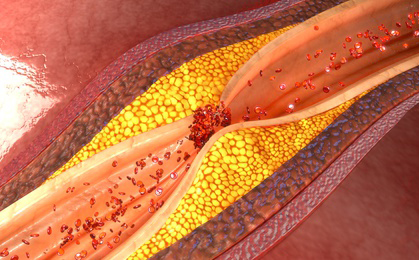 The aim of this study was to explore the relationship between temporal changes in coronary plaque volume and the intensity of lipid lowering treatments using coronary computed tomography (CTA).
The aim of this study was to explore the relationship between temporal changes in coronary plaque volume and the intensity of lipid lowering treatments using coronary computed tomography (CTA).
Coronary computed tomography has acceptable accuracy in terms of quantitative measurement on plaque volume, enough to identify changes in volume according to LDL levels.
This multicenter study included 467 patients undergoing multislice CT angiography over more than two years (mean 3.2 years), whose lab data were available within one month of both baseline and follow-up coronary CTA. Out of these patients, 147 were enrolled in the study, for they had visible plaque compromising 336 vessels.
Researchers compared patients reaching a cutoff value of 70 mg/dl LDL vs. those who did not. Patients below 70 mg/dl showed a significant reduction of plaque progression vs. those above 70 mg/dl (12.7 ± 38.2 mm3 vs. 44.2 ± 73.6 mm3, respectively; p=0.014).
In multivariable analyzis, the only factor influencing plaque progression was LDL cholesterol level.
Conclusion
Strict control of LDL levels significantly reduces plaque volume progression accordion to the non-invasive measurement with multislice CTA.
Original Title: Impact of Intensive LDL Cholesterol Lowering on Coronary Artery Atherosclerosis Progression A Serial CT Angiography Study.
Reference: Sanghoon Shin et al. J Am Coll Cardiol Img. 2016. Online First.
Subscribe to our weekly newsletter
Get the latest scientific articles on interventional cardiology
We are interested in your opinion. Please, leave your comments, thoughts, questions, etc., below. They will be most welcome.





